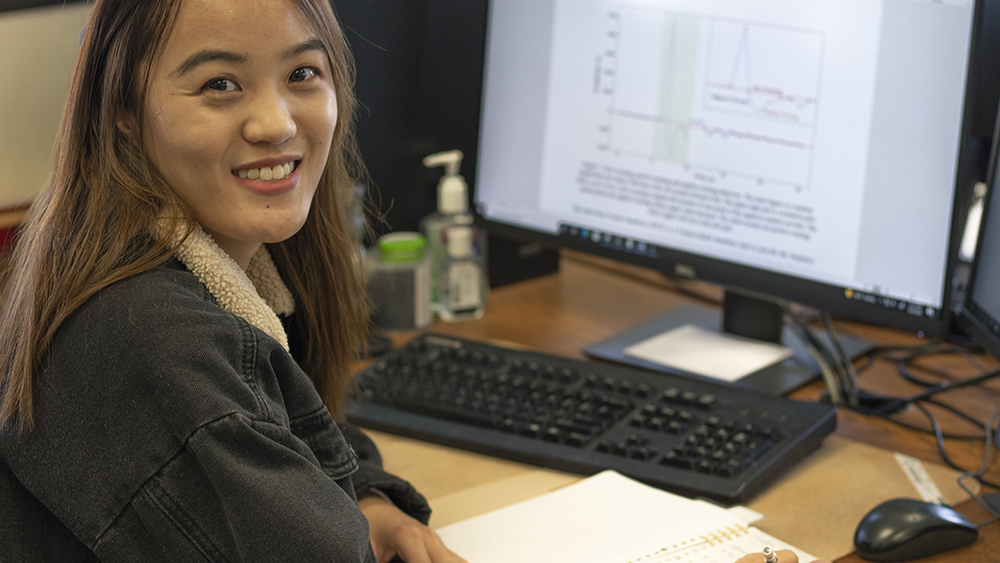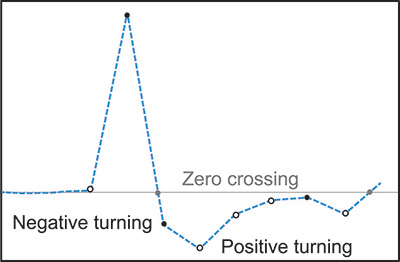
If a rock deep in the subsurface cracks and fails under pressure and temperature change, can the sound it makes be heard and identified? Finding something that specific among all the other underground noises might seem impossible, but researchers at Texas A&M University proved otherwise.
Dr. Siddharth Misra, the Ted H. Smith, Jr. ’75 and Max R. Vordenbaum ’73 DVG Associate Professor in the Harold Vance Department of Petroleum Engineering, discovered a way to hear and validate that sound in a project funded by the Basic Energy Sciences program of the Department of Energy (DOE).
“The DOE calls sounds of specific events the ‘signs of signature,’” said Misra. “In this case, the signature identified the break or mechanical discontinuity of a rock in the earth’s subsurface, especially as the breaks continued to grow or propagate into fractures.”
Misra and his doctoral candidate Rui Liu published their preliminary findings in the Systems and Signals Processing journal.
Why does Basic Energy Sciences want this signature identified? Sounds are often important clues to environmental and security changes. Threatening noises, such as underground explosions, are hard to mistake. But the small sounds of a high-rise building foundation cracking and failing are just as threatening. So, the fundamental sound of rock undergoing mechanical failure is a basic and critical clue worth finding.
“This research goes to the heart of identifying something specific within a massive data set,” said Misra. “An example is credit card transactions. You cannot monitor the whole data set for fraud because the transactions are so varied. You must find some indicative sign, such as a credit card charge in one city to book an airline flight immediately after that same card pays for an Uber in another city. That discrepancy is a signature.”
Previous attempts to pinpoint underground mechanical failures never brought reliable success, but Misra found that an unusual combination of three research methods — supervised machine learning, causal discovery and rapid simulations — could tackle the problem.
The supervised machine learning began with lab experiments in which a multipoint sensor system was placed on the surface of a rock and recorded sound wave-transmission measurements through the material as it cracked and finally failed. Computers monitored the information and were taught which data signatures meant initial, intermediate and end-stage damage. One tell-tale signature that repeatedly traveled up and down across the zero point between positive and negative measurements caught the computer’s attention, once it knew what to look for.
“I can only see the color or shape of something with my eyes,” said Liu. “But machine learning can pick out so many more characteristics from the data. It picked out those positive and negative turnings, and we used that sign to get further results.”

Misra and Liu searched for the causation of each of these turnings to confirm their source. They couldn’t rely on the computer to complete this step because machine learning is not the best interpreter.
“During the heat of the summer, ice cream sales increase and drowning deaths increase,” said Misra. “If you use machine learning or simple statistical methods, they might say people are drowning because people eat ice cream. That's a correlation. Though they are both related to the summer heat, they are not connected to each other. They each have a different cause. We are looking for causation for these turnings because that's when they become meaningful.”
Misra and Liu created a workflow that could generate scenarios of various fracture propagations and measured waveforms. Then, they increased the workflow’s speed to rapidly run up to 20,000 different simulations of possibilities for each event. This allowed the researchers to discover the best cause-and-effect explanations.
“We didn’t control how the discontinuity propagated, so there's a lot of randomness,” said Misra. “Yet, as the fractures grew, despite the differences in direction or length, results showed a similar increase in amplifications or positive and negative turnings across the zero point in the waveforms. So, this is a definite signature of rock failure, which, to the best of my knowledge, was not known prior to this research.”
While the signature discovery is exciting, the project still has several months to go. Misra intends to explore the limits of the data-driven simulations and causal discovery approach. He will also test other methods to see if similar or different results occur.
“What we need to do as scientists, as engineers, is to find causality, find causation,” said Misra. “We tried a lot of different techniques to discover this signature and its causal relationships. A lot of approaches didn't work, but one did. Now we need to find the limits of what it can do.”